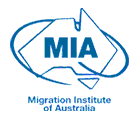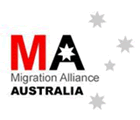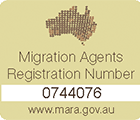Do you know why a large number of migrant apply for family visa Australia every year? Because Australia is such a beautiful country for living and working. Australia officially the Commonwealth of Australia, is a country comprising the mainland of the Australian continent, the island of Tasmania and numerous smaller islands. It is the world’s sixth-largest country by total area. Neighbouring countries include Indonesia, East Timor and Papua New Guinea to the north; the Solomon Islands, Vanuatu and New Caledonia to the north-east; and New Zealand to the south-east.
For at least 40,000 years before European settlement in the late 18th century, Australia was inhabited by indigenous Australians, who belonged to one or more of roughly 250 language groups. After discovery by Dutch explorers in 1606, Australia’s eastern half was claimed by Great Britain in 1770 and settled through penal transportation to the colony of New South Wales from 26 January 1788. The population grew steadily in subsequent decades; the continent was explored and an additional five self-governing Crown Colonies were established.
On 1 January 1901, the six colonies federated, forming the Commonwealth of Australia. Since Federation, Australia has maintained a stable liberal democratic political system that functions as a federal parliamentary democracy and constitutional monarchy. The federation comprises six states and several territories. The population of 22.7 million is highly urbanised and heavily concentrated in the eastern states due to geography and climate.
A highly developed country and one of the wealthiest, Australia is the world’s 12th-largest economy and has the world’s fifth-highest per capita income. Australia’s military expenditure is the world’s 13th-largest. With the second-highest human development index globally, Australia ranks highly in many international comparisons of national performance, such as quality of life, health, education, economic freedom, and the protection of civil liberties and political rights. Australia is a member of the G20, OECD, WTO, APEC, UN, Commonwealth of Nations, ANZUS and the Pacific Islands Forum.
About Victoria

Victoria (abbreviated as Vic.) is a state in the south-east of Australia. Geographically the smallest mainland state, Victoria is bordered by New South Wales to the north, the Tasman Sea to the east, the Bass Strait and Tasmania to the south, and South Australia to the west. Australia’s most densely-populated state, most of Victoria’s population is concentrated in the area surrounding Port Phillip, including the capital and largest city, Melbourne, which is also Australia’s second-largest city overall.
Prior to European settlement, the area now constituting Victoria was inhabited by a large number of Aboriginal peoples, collectively known as the Koori. With Great Britain having claimed the entire Australian continent east of the 135th meridian east in 1788, Victoria was included in the wider colony of New South Wales. The first settlement in the area occurred in 1803 at Sullivan Bay, and much of what is now Victoria was included in the Port Phillip District in 1836, an administrative division of New South Wales. Victoria was officially created a separate colony in 1851, and achieved self-government in 1856. The Victorian gold rush in the 1850s and 1860s significantly increased both the population and wealth of the colony, and by the Federation of Australia in 1901, Melbourne had become the leading financial centre in Australasia. With Canberra still under construction, Melbourne also served as interim capital of Australia until 1927, with the Federal Parliament meeting in Parliament House.
About Melbourne

Melbourne is the capital and most populous city in the state of Victoria, and the second most populous city in Australia. The Melbourne City Centre is the hub of the greater metropolitan area and the Census statistical division—of which “Melbourne” is the common name. As of June 2011, the greater geographical area had a population of 4.1 million. Inhabitants of Melbourne are called Melburnians or Melbournians.
The metropolis is located on the large natural bay known as Port Phillip, with the city centre positioned on the estuary of the Yarra River (at the northernmost point of the bay). The metropolitan area then extends south from the city centre, along the eastern and western shorelines of Port Phillip, and expands into the hinterland. The city centre is situated in the municipality known as the City of Melbourne. The metropolitan area consists of a further 30 municipalities.
Melbourne was founded in 1835 (47 years after the European settlement of Australia) by settlers from Launceston in Van Diemen’s Land. It was named by Governor of New South Wales Sir Richard Bourke in 1837, in honour of the British Prime Minister of the day, William Lamb, 2nd Viscount Melbourne. Melbourne was officially declared a city by Queen Victoria in 1847. In 1851, it became the capital city of the newly created colony of Victoria. During the Victorian gold rush of the 1850s, it was transformed into one of the world’s largest and wealthiest cities. After the federation of Australia in 1901, it served as the interim seat of government of the newly created nation of Australia until 1927.
Often referred to as the “Garden City” and “cultural capital of Australia”, Melbourne is the birthplace of cultural institutions such as Australian film (as well as the world’s first feature film), Australian television, Australian rules football, the Australian impressionist art movement (known as the Heidelberg School) and Australian dance styles such as New Vogue and the Melbourne Shuffle.] It is also a major centre for contemporary and traditional Australian music.
Melbourne was ranked as the world’s most liveable city in ratings published by the Economist Group’s Intelligence Unit in August 2011 and again in 2012. It was also ranked in the top ten Global University Cities by RMIT’s Global University Cities Index (since 2006) and the top 20 Global Innovation Cities by the 2thinknow Global Innovation Agency (since 2007). The metropolis is also home to the world’s largest tram network. Melbourne Airport, the main passenger airport, is the second busiest in Australia and the Port of Melbourne is Australia’s busiest seaport for containerised and general cargo.






